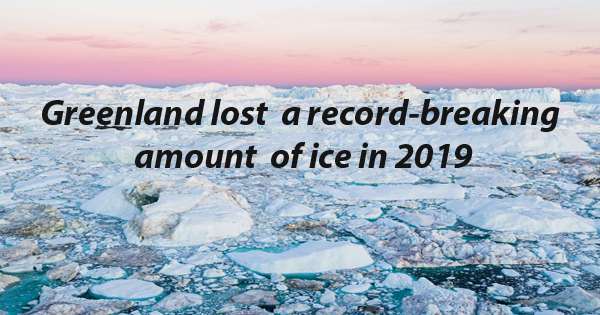Despite intense pressure to curb carbon emissions in controlling climate change, Greenland continues to lose its dense ice cover, sea levels rise and alarm bells are rung across several countries. The island lost 532 billion tons of ice in 2019 – the highest loss since 1948. It estimates the rate of more than 1 million tons per minute in 2019.
The amount of ice lost since 2009 was more than double the annual average in 2015 when NASA satellites began recording exactly how much ice was melting, according to a recent study in the Journal of Communication and Environment. There were about half the losses in July alone, during a historic heatwave that spread across Europe, in 2012, when the island lost 444 billion tons of mass from its thick sheet. The last decade has seen five years with the most losses.
Researchers have compared satellite data with regional climate models. Greece and GRAC-FO are the two satellite missions that play a key role in the observation of ice sheets.
The record melt would probably raise global sea levels by 1.5 millimeters, enough to submerge the entire state of California in more than 4 feet of water, Suggested suggestions. Alex Gardner, a researcher, and co-author of the study at NASA’s Jet
Propulsion Laboratory, said, What I find interesting is the high variability in the loss rate of Greenland ice sheets.
study, More and more often, we have stable atmospheric high-pressure systems above the ice sheets, which support the arrival of warm air from mid-latitudes, one of the conditions to stimulate the throat. The island has lost significant ice
mass.
















